Why does every ‘beginner plant’ list feel like déjà vu? Spider plants are cute and all, but we can do better. In the past year, my partner and I have become quite the plant fanatics and our collection sits at around 100. We have had many wins, losses, and just straight up frustration. Learn from our mistakes and check out these 7 beginner friendly houseplants that are anything but boring.
Basic Tips For (New) Plant Lovers:
Before we get into the good stuff, let’s break down the basics. I’m assuming that if you’re checking out this post, you may be newer to the plant parent world. First off, welcome! Second off, I got you. All plants need water, light, humidity, and love. Bonus points if you give them food (fertilizer) as well.
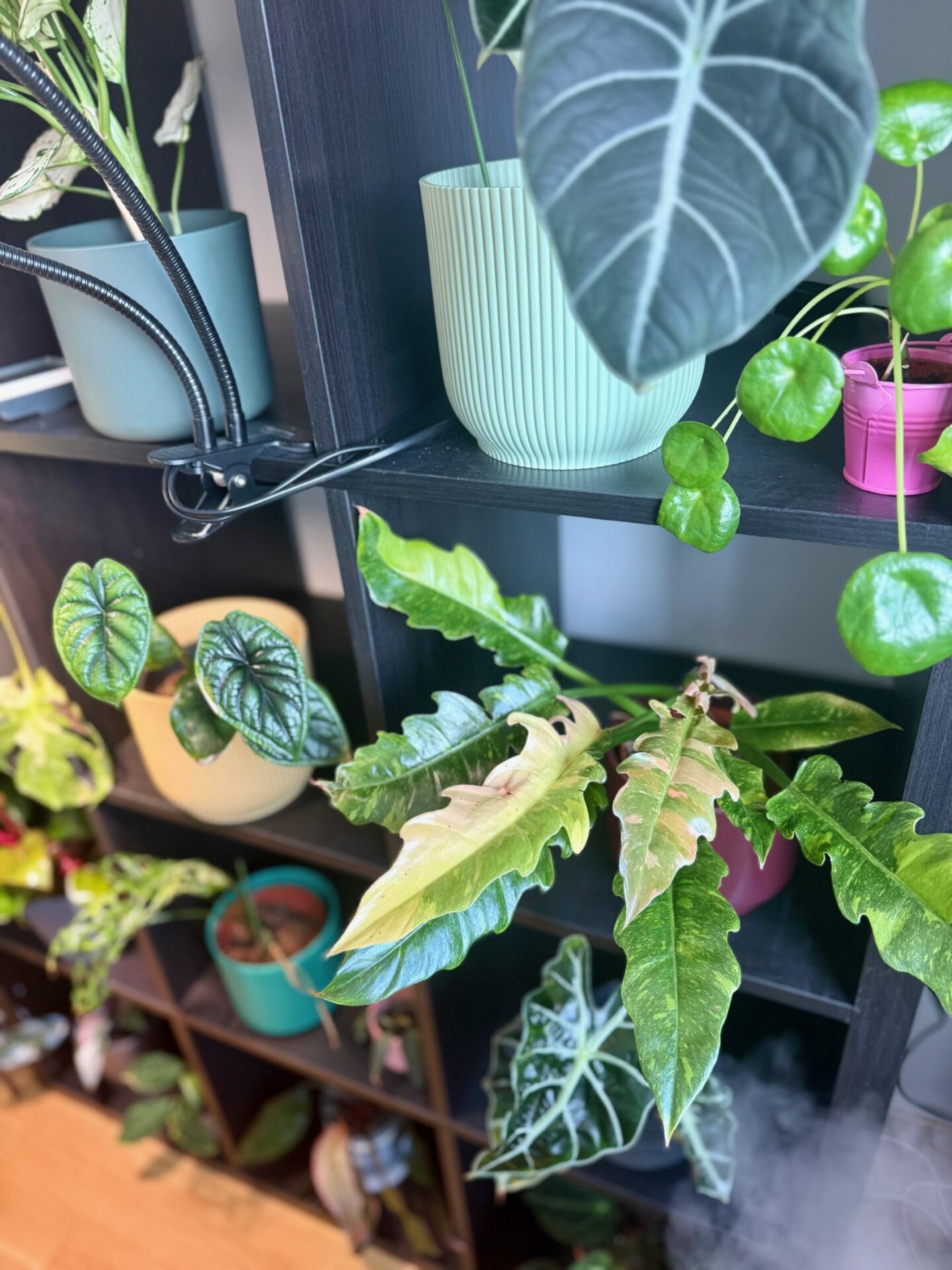
In general, most houseplants want bright, indirect light. This means no direct sun, but no shady corner, either. Think near a bright window, but not necessarily in front of it if it’s exposed to the sun. There are always exceptions, so make sure to look into your specific plant’s care instructions prior to adding to cart. The worst thing you can do is impulse purchase and then realize you don’t have the ideal climate for it. Trust me…
Water is the trickiest bit. Each plant has its own likes and dislikes, particularities, and drama queen tendencies. In my experience, what you read online may not be how your specific houseplant wants to be watered! You have to learn to listen to your plants and recognize their tells. Generally speaking, most houseplants dislike sitting in water and will more than likely go to the light if their roots stay wet ( the dreaded root rot). Some plants will dramatically start to droop when thirsty; they are my favorites since they actually communicate clearly on their needs. Speaking of which, you can’t drown a plant with one watering session. So when you start to water, make sure it is thorough and the water starts to come out of the drainage holes. And yes, a pot with drainage holes is mandatory. Thank me later.
Humidity is something most beginner plant parents disregard at first. I know I sure did. Thing is, these cute tropical numbers you see all over social media are used to living in the jungle. Moving them to a dry living room is not ideal. While many will survive without proper humidity, they may not thrive. A humidifier is a quick and easy solution to this problem. You probably don’t need to invest in this unless you start going for the jungle beaties or start having lots of plants. Grouping plants together is another great way to naturally increase the humidity.
Last, but not least, love! And by love, I mean food and soil. Fertilizer is something else that you don’t have to do for most easy plants (unpopular plant fanatic opinion), but it will always help your plants to grow big and strong. They need nutrients, too! Just follow the instructions on the bottle, keeping the seasons in mind, and there you go. It truly is that easy. As for soil it is usually poor quality unless purchased at a nursery, and even there. Look into what your plant likes and purchase accordingly. A good rule of thumb is to let your plant acclimate a good month or two to your home before having a traumatic soil transplant.
Just remember that each plant is different, so make sure to look up all of its needs prior to purchase. You want the plant to thrive. The plant certainly wants to thrive. Do your homework before taking on this responsibility.
Syngoniums:
An underrated houseplant in the community. I actually got my first one in a mystery plant box which led me to purchasing another! These guys are anything but complicated.
They consistently put out a ton of new leaves and they can get quite large. Syngoniums are very much a high reward plant with instant payoff. Plus, she’s got some really cool color and pattern options.
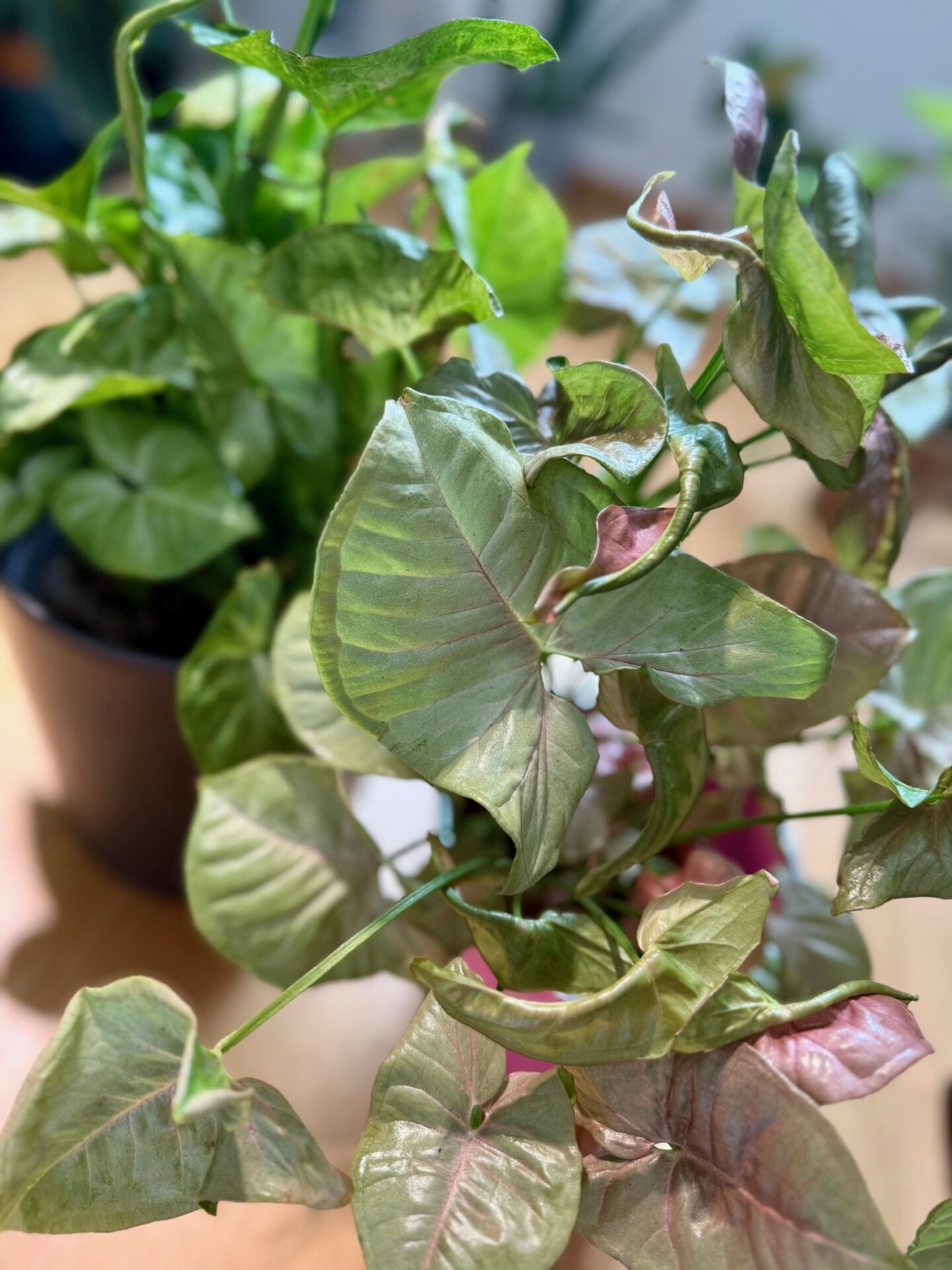
She tends to collapse on herself when thirsty, which is great. But generally speaking, I usually water mine every 7-10 days and keep her in a well-draining soil. She’s chilling in my plant room with a bunch of other plant friends and mostly relies on natural lighting.
This is one of the few houseplants that has never stressed me out or given me anxiety. She’s also one of the few who has not gotten thrips (would not wish them on my worst enemy). 10/10 would recommend and re-purchase.
(Raven) ZZ Plants:
Okay, okay, okay. Hear me out. I know this is a plant that is on everyone’s beginner houseplants list, but there is a reason for it. She was my first houseplant as well, and historically, I was a poor plant parent at the time. Not only has she survived, but she has thrived! She used to be so tiny, and now, four years later, she’s a beauty.
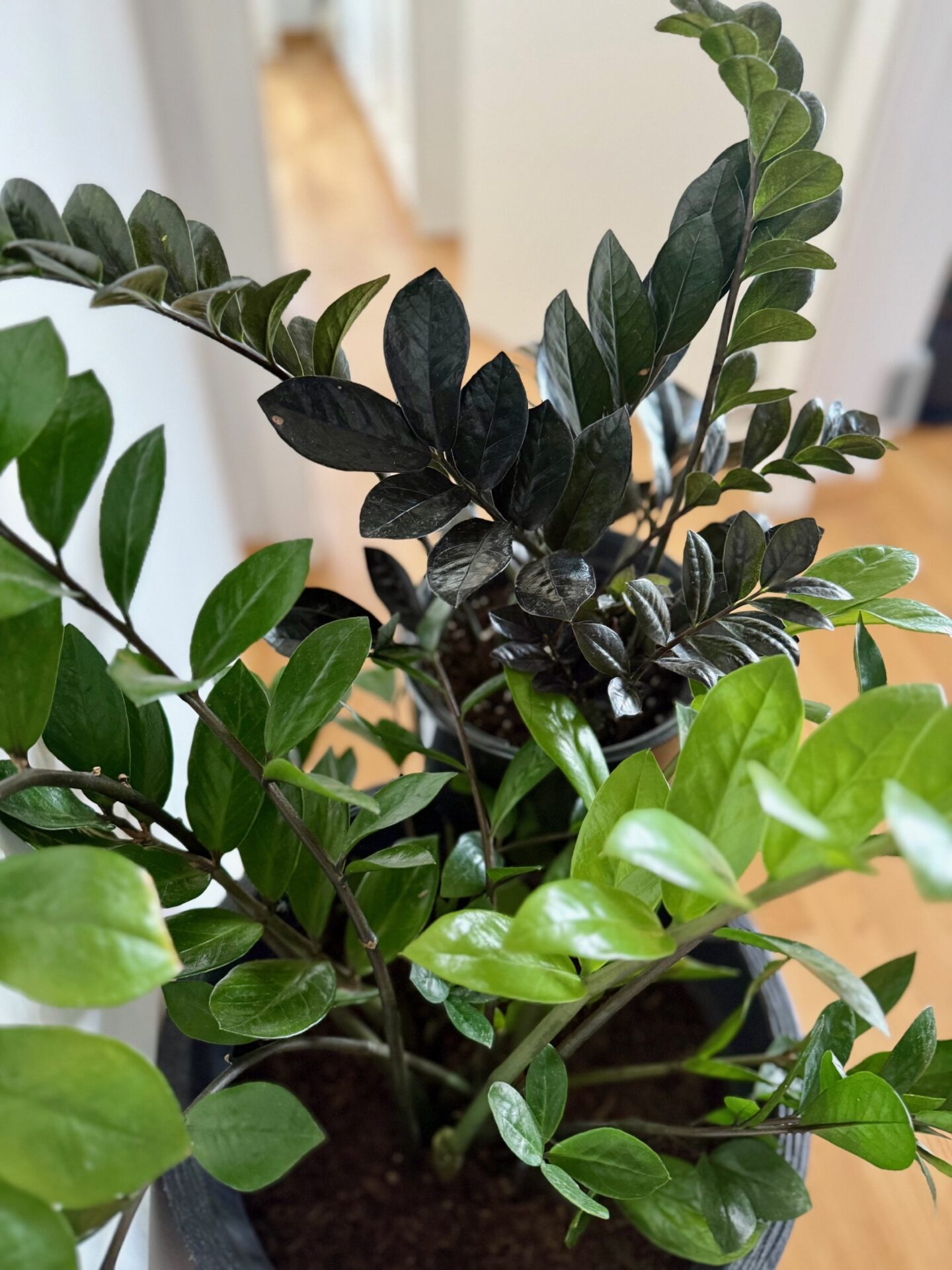
What I do recommend for some spice is going for her sister, the Black Raven. This is a fairly new variation of the ZZ that starts off green, but turns almost black in a few months. She’s a very unique plant and has the same easy care as the OG ZZ. Honestly, it’s Halloween all day, every day with her around.
She can tolerate low light (low, not none, and tolerate, not thrive), needs a drink every few months, isn’t picky with soil, and keeps her leaves for ages. Honestly, the most low maintenance plant out there. My first ZZ came from a hotel in Cannes that changed the decor if that tells you anything about how easy she is to take care of. We all know the plants don’t get watered often at hotels… Heck, they’re usually fake!
Mini Orchids:
This is going to be the most controversial plant/flower on my list. Many consider orchids to be advanced and very difficult. I beg to differ. Orchids are ridiculously easy, but also quite misunderstood. Mini orchids are even easier and seem to have more regular bloom cycles than their older, full-sized sisters.
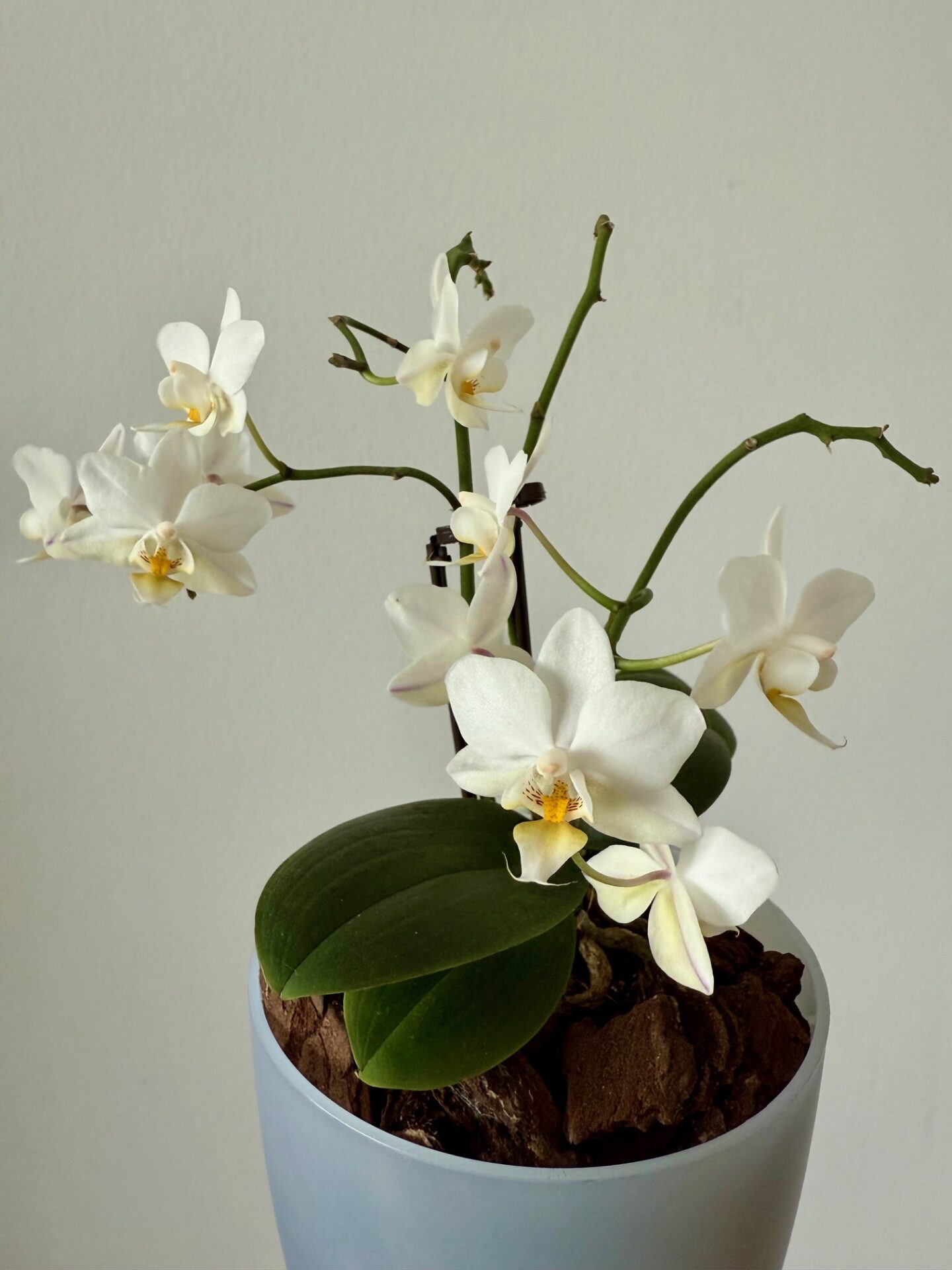
I got mine from IKEA and they tend to bloom every few months from the same stems! I soak them once every week (the mini versions have very small pots, so they dry up faster) for about a minute or until the soil is all wet. Make sure to NEVER get water in the crown (again, soak her!), and place her on a windowsill with very bright light, but no sun.
The soil does need to be orchid bark, but they are often sold with it already. If you do decide to give her food, just make sure she no longer has flowers. Cut back her stems when they turn yellow, and whisper sweet nothings to her. That’s it. I swear, orchids are the easiest flower out there.
Cylinder Snake Plants:
Another classic one, but with a twist. Sure, you can go for the basic mother in law’s tongue, but I’d say switch it up a bit. Go for another variation with these long, cool looking zebra-printed spikes! I find this plant so fun and she also has the same, simple care instructions.
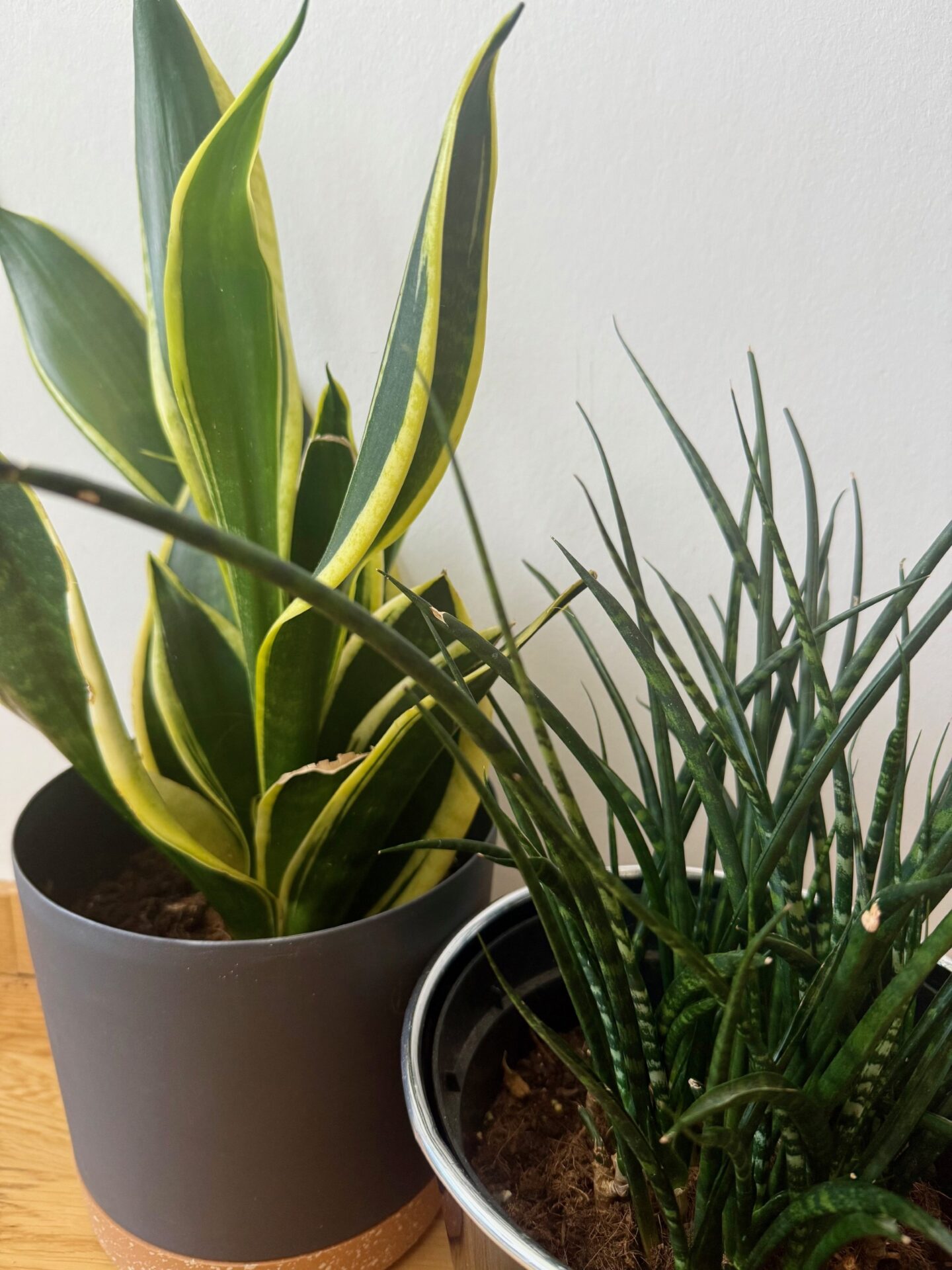
Just like the ZZ, she tolerates low light, needs water every couple of months, and doesn’t really lose her leaves, or uh, well, spikes. I have zero complaints. All love.
Monstera Adansonii:
I love monstera plants. I feel like most people think of Monsteras in general when you start talking about plants. These babies are vine plants, so they will easy crawl on the floor or, the preferred option, climb up a moss pole. She tends to put out a ton of new leaves at once and grows very quickly.
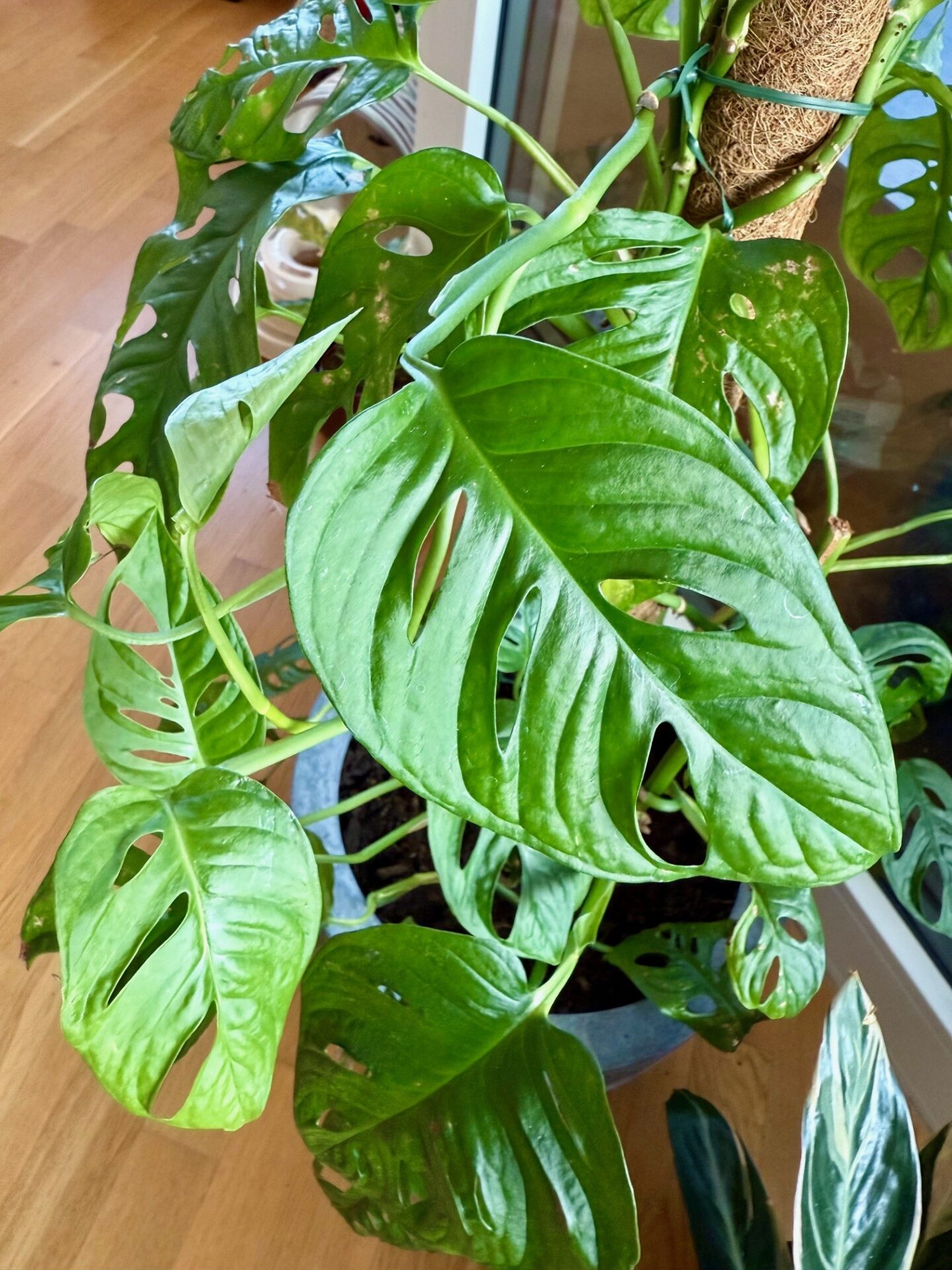
She does need a ton of bright, indirect light and does well when fed. Water wise, every 10-14 days or so seems to keep mine happy. However, you can tell when she’s thirsty as her leaves will start to droop and look sad.
As long as you keep her conditions ideal, she will most certainly keep on vining up and could easily outgrow you! The most annoying part is having to constantly buy new moss poles to keep up with her big girl dreams…
Pothos:
Another classic that will grow so quickly, you don’t know what happened. For me, a pothos is the beginner houseplant that will give you the most leaf payoff, by far. We have ours hung up against a window and she’s quickly wrapping her way around our ceiling and walls in three different directions.
I would go for the Marble Queen here as she looks variegated without all of the annoying characteristics of a proper variegated plant. The more light she has, the faster she will grow, as is the case with most plants. Her leaves can get quite large as well.
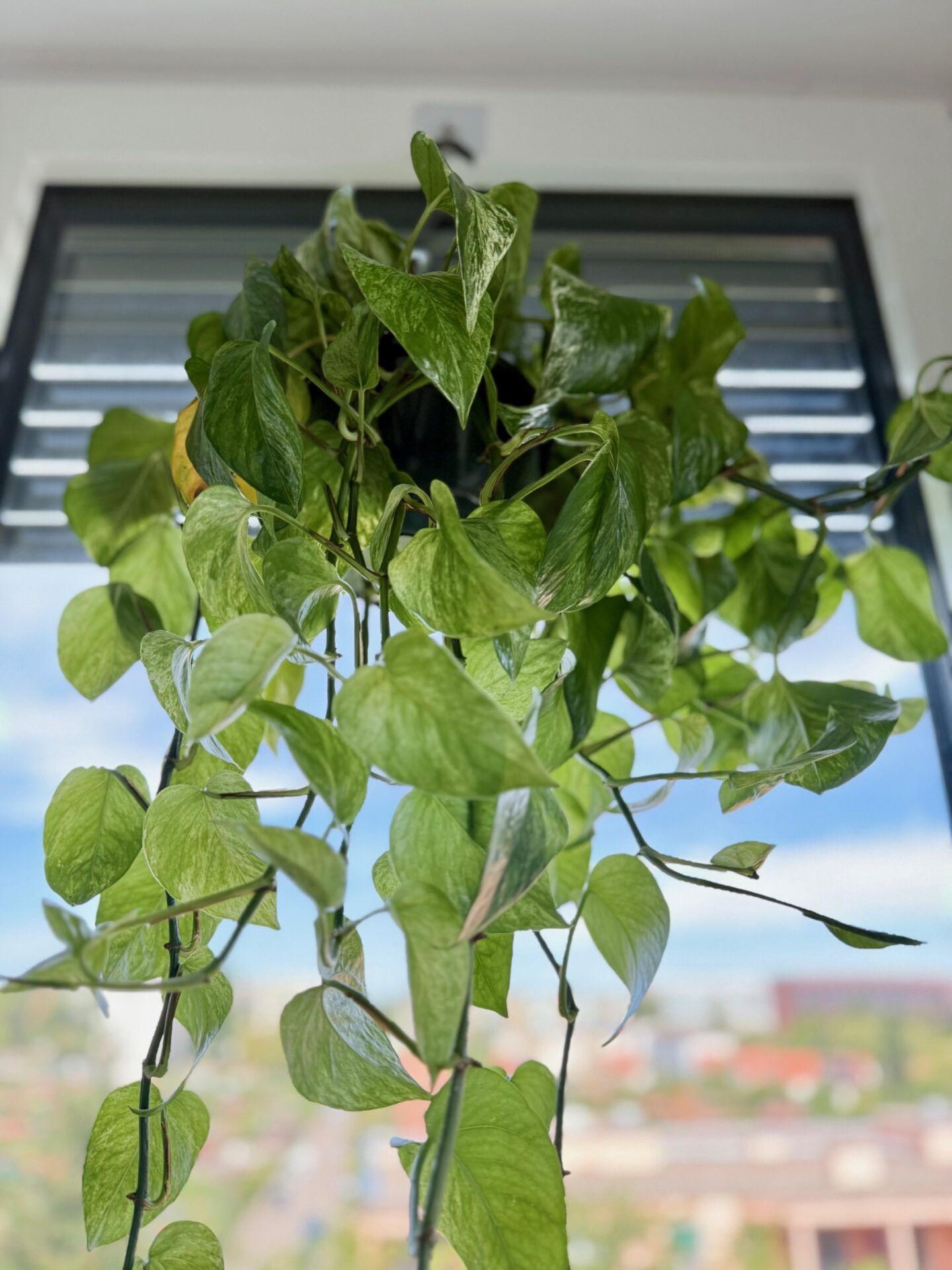
I personally don’t feed mine much as she’s already growing very quickly, but I can only imagine how much more she would grow if I did it regularly. Soil wise, she’s not picky. Well draining is recommended, but she can probably make do with whatever she came in if you can’t be bothered.
If you’re considering trying propagations in the future, a pothos is quite literally one of the easiest to propagate. I’ve actually done it myself!
Lucky Bamboo:
But in water! Just about any houseplants can be kept in water, but some don’t do too well or may adapt poorly. The bamboo is not one of those plants. This queen thrives in water. And water means no gnats! It’s a win-win. She’s a slow grower and won’t do too much, but I find her so relaxing.
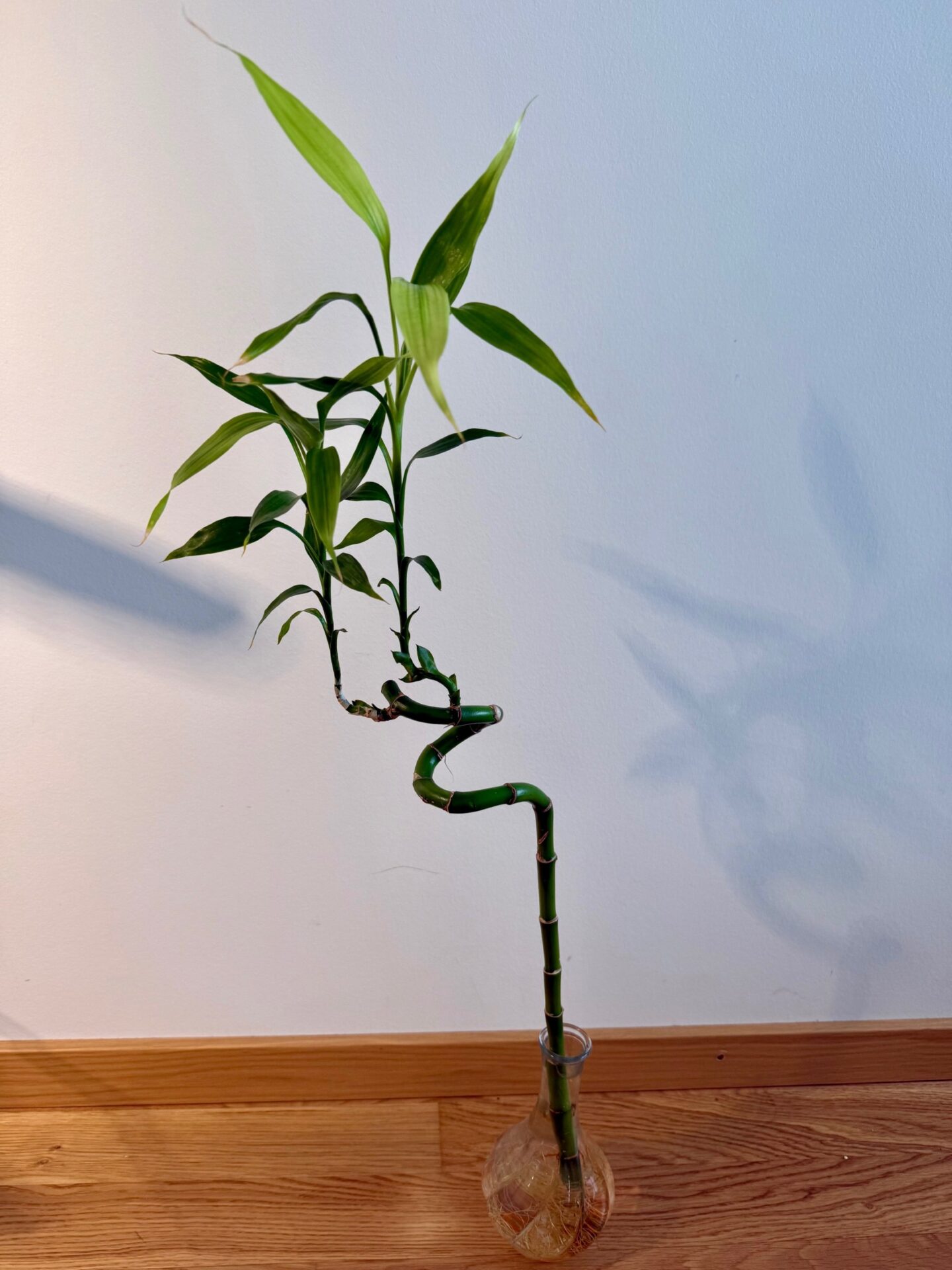
Ours sits in a shelf and gets most of her light in the morning hours. I change her water once a week, usually Sundays, to avoid any bacteria buildup and I call it a day. She’s also the ideal plant when on holiday as she won’t dehydrate, obviously. If you’re known to be a chronic overwaterer, get yourself a lucky bamboo in a cute vase.
Final Thoughts On Beginner Plants:
There are lots of plants that could fall into the beginner houseplants category. In the end, it truly depends on you, your plant, and your home.
I have had a wonderful experience with orchids to the point that I’ve gifted one to a family member, who was quite worried at first, but now agrees with me that they’re very unproblematic. Others have said that I must be lying! And on the flip side, I find Aloe Vera plants and succulents in general to be an absolute nightmare, but many consider them to be the easiest of the bunch.
With the right information and research, I’m sure you can find a plant that will work well for you. But I do recommend giving yourself the best chance possible and going for something from this list over that gorgeous variegated Alocasia or exotic Venus flytrap. To start, of course.
As previously mentioned, my first houseplant was a ZZ. My second? The traditional Snake plant, followed by the spikey version. Then the orchids, and after a few months of those doing well, I went for the moderate to advanced plants. And even there, mistakes, sometimes irreversible, were made.
Just take it slow, be kind to yourself, don’t overwater, and all will be fine.
Check out my other blog posts here.
SUBSCRIBE
Make sure to subscribe in order to get an email reminding you of my new blog post. 🙂 I appreciate you!
Stay Chaotic,
Tess
